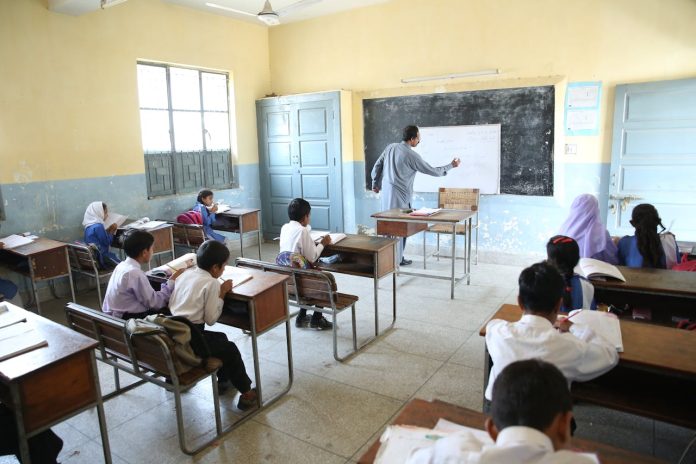Imagine a classroom where every student, regardless of their background or ability, learns side by side—sharing ideas, experiences, and challenges. This vision comes to life through integrated education, a transformative approach that breaks down traditional barriers and fosters an inclusive environment. But what exactly is integrated education, and how does it differ from conventional educational models? Well, let’s take a look at what integrated education is and how is it different in this article.
What is Integrated Education?
At its core, integrated education emphasizes the idea that all students should learn together, rather than in segregated settings. This model combines students with varying abilities, backgrounds, and learning needs in the same classroom. This approach is particularly significant for students with disabilities, as it seeks to foster a sense of belonging and community while providing equal access to quality education. It promotes collaborative learning, encouraging peer interaction and mutual support, which can enhance educational outcomes for all participants.
In practical terms, integrated education often involves:
- Co-teaching Models: General and special education teachers work together to plan and deliver lessons, ensuring that all students receive appropriate support.
- Universal Design for Learning (UDL): Educators employ flexible teaching methods and materials to accommodate diverse learning styles and needs.
- Peer Support: Students learn from and with each other, fostering an inclusive atmosphere where everyone’s contributions are valued.
Benefits of Integrated Education
- Enhanced Social Skills: Students in integrated settings have more opportunities to interact with peers from diverse backgrounds, helping to develop critical social skills and empathy.
- Improved Academic Outcomes: Research indicates that students with disabilities often perform better academically when educated alongside their peers in inclusive environments.
- Preparation for Real-World Scenarios: Integrated education mirrors real-world environments where individuals with varying abilities and backgrounds collaborate, promoting understanding and acceptance.
- Stronger Support Networks: An inclusive classroom fosters a supportive community where students can learn from one another, enhancing the educational experience for all.
- Reduction of Stigma: When students with and without disabilities learn together, it helps to diminish stereotypes and misconceptions, fostering a culture of acceptance and inclusion.
Challenges Faced by Integrated Education
While the benefits of integrated education are significant, implementing this model comes with its own set of challenges:
- Resource Allocation: Schools may struggle with insufficient resources, such as specialized training for teachers, additional staff support, or appropriate materials to accommodate diverse learners.
- Teacher Training: Effective integration requires educators to be well-trained in inclusive practices. Many teachers may feel unprepared or lack the necessary skills to address the diverse needs of all students.
- Curriculum Adaptation: Adapting the curriculum to meet the varying needs of students can be a complex task, requiring additional planning and creativity from teachers.
- Resistance to Change: Some educators, parents, or administrators may be resistant to inclusive practices due to misconceptions about the effectiveness of integrated education or fear of change.
- Individual Needs: While integration is beneficial, it’s essential to recognize that some students may require more individualized attention than a typical classroom setting can provide.
Who Benefits from Integrated Education?
Integrated education is beneficial for all students, not just those with disabilities. Here’s how different groups can gain from this approach:
- Students with Disabilities: Gain access to a broader range of learning experiences, improved social skills, and increased academic achievement.
- Typically Developing Students: Develop empathy, learn to collaborate with diverse peers, and enhance their problem-solving and communication skills.
- Educators: Benefit from professional growth through collaboration and the opportunity to learn new teaching strategies that can improve their overall effectiveness.
How is it Integrated Education different from traditional education?
Integrated learning is different from traditional education in a few key ways:
- Connecting Subjects: Instead of learning subjects separately, integrated learning combines them. For example, a project might involve math, science, and art all at once, helping students see how everything relates.
- Real-Life Applications: This approach focuses on real-world problems and scenarios, making lessons more relevant and interesting. Students can see how what they learn applies outside the classroom.
- Teamwork: Integrated learning often involves working in groups. This encourages students to collaborate, communicate, and develop important social skills.
- Flexible Lessons: Teachers can adapt lessons based on student interests and current events, making learning more dynamic and engaging rather than sticking to a strict curriculum.
- Critical Thinking: Students tackle complex, interdisciplinary problems, which helps them develop critical thinking skills that prepare them for challenges in life.
In short, integrated learning creates a more connected and engaging educational experience compared to the more traditional, subject-focused approach.
Integrated education is a powerful approach that fosters inclusivity and equity in the classroom. While it presents certain challenges, the benefits for students, educators, and the broader community are profound. By working together to address the barriers to successful implementation, we can create educational environments that not only support diverse learning needs but also prepare all students for a more inclusive world. As society continues to embrace the value of diversity, integrated education stands as a testament to the potential for unity and collaboration in the pursuit of knowledge.





























